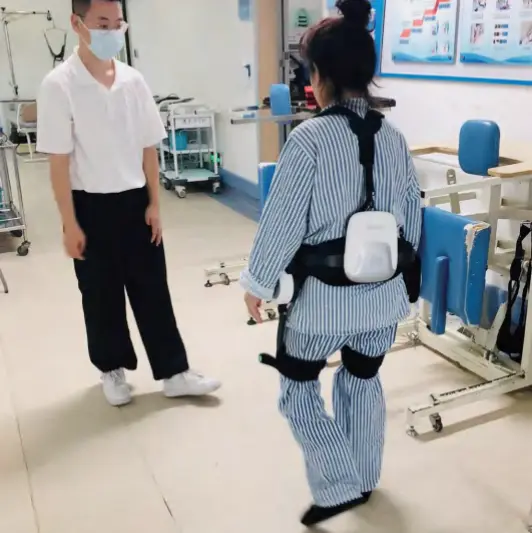Neurological damage from strokes or spinal injuries often leaves patients trapped in endless therapy cycles. Traditional methods struggle to rebuild lost mobility. Robotic exoskeletons are rewriting recovery timelines through targeted assistive technology. Rehab exoskeletons are wearable robotic devices that support limb movement, enabling patients to relearn walking patterns while collecting real-time data to optimize therapy plans for neurological conditions. These devices bridge the gap between passive exercises and active recovery. Let’s examine how they work and who gains the most from this innovation.

Many assume exoskeletons are just "robot suits". But their true power lies in mimicking natural human motion while adapting to individual limitations. Exoskeletons combine motors, sensors, and AI algorithms to detect muscle signals and body position, delivering precise assistance during walking or standing exercises to reinforce healthy movement patterns.
| Component | Role in Recovery |
|---|---|
| Force Sensors | Measure joint torque to adjust support levels |
| EMG Electrodes | Detect muscle activation timing |
| Gait Analysis AI | Compare movements to ideal patterns |
| Adjustable Actuators | Provide resistance or assistance |
Detects delayed hip flexion via sensors
Triggers actuators to assist upward motion
Records deviation for therapist review This closed-loop system accelerates neuroplasticity by ensuring every repetition aligns with recovery goals. Studies show 3x faster gait improvement versus manual therapy.
Patients with partial paralysis often plateau within months of traditional therapy. The rehab exoskeleton breaks this stagnation through intensive, task-specific training. Exoskeleton-assisted therapy improves walking speed by 40-60% in stroke patients and restores stepping ability to 70% of incomplete spinal injury cases within 12 weeks. !
Stroke Patients (6-week trial)
55% longer walking distances
33% fewer falls
28% improved balance scores Spinal Cord Injury Patients
80% regained assisted walking ability
65% reduced muscle spasticity
50% shorter hospital stays The devices enable high-dose repetition without therapist fatigue. One spinal injury patient achieved 1,200 steps per session versus 300 manually. More repetitions mean faster neural pathway repair.
Clinics often hesitate to adopt new tech due to training demands. Modern exoskeletons simplify integration through customizable protocols. Therapists start with 20-minute assisted sessions 3x weekly, gradually increasing duration and complexity as patients build strength and coordination.
1.Weight Support Mode
70% bodyweight support
Basic stepping on treadmill
2. Adaptive Assistance
Real-time resistance adjustment
Over-ground walking
3. Cognitive Challenges
Obstacle navigation
Dual-task training (walking while counting) A typical 12-week program progresses from seated leg exercises to supermarket mobility simulations. Patients using integrated plans show 90% adherence rates versus 60% in conventional therapy.
Not all neurological patients qualify immediately. Ideal candidates need specific physical and cognitive markers. Patients with partial limb control (MAS score ≥2), stable reflexes, and ability to follow 2-step commands gain the most from exoskeletons in early rehabilitation phases.
| Factor | Required Level |
|---|---|
| Trunk Control | Able to sit unsupported for 5 minutes |
| Cognitive Status | MMSE score ≥24 |
| Joint Flexibility | Hip/knee flexion >50% normal range |
| Motivation | High adherence likelihood |
Rehab exoskeletons merge human effort with robotic precision, offering personalized, data-driven recovery for neurological patients – turning years of therapy into months of measurable progress.